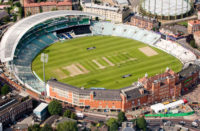Cricket is a sport that has captivated millions of people around the world. One of the most significant aspects of this sport is the venues where the matches are played.
Cricket grounds are not only places where the game is played but also landmarks that reflect the history and culture of the regions where they are located. From iconic cricketing cathedrals to newly built modern stadiums, cricket grounds have evolved over time to accommodate more spectators and improve the overall experience of the game. If you have some free time, before you try online gambling and fall in love with it, let’s explore some of the famous cricket grounds around the world that are not only wonders of architecture but also have a rich cricketing legacy.
Lord’s Cricket Ground, London
Lord’s Cricket Ground, located in St John’s Wood, London, is one of the most famous cricket grounds in the world. It is also known as the “Home of Cricket” and has been hosting cricket matches since 1814. The ground is named after Thomas Lord, who first laid the turf for the cricket pitch in 1787. The ground has a seating capacity of 30,000 and is home to the Marylebone Cricket Club (MCC).
The architecture of the ground is a unique blend of traditional and modern elements. The pavilion at Lord’s is an iconic structure that has been the subject of numerous paintings and photographs over the years. The pavilion is a Grade II listed building and was built in 1890. It is a two-story structure made of red brick and has a sloping roof with dormer windows. The ground also has a modern media center that was built in 1999 and has won several awards for its design.
Melbourne Cricket Ground, Melbourne
The Melbourne Cricket Ground, also known as the MCG, is one of the most significant cricketing venues in the world. It is located in Yarra Park, Melbourne, and has a seating capacity of over 100,000, making it the largest cricket stadium in the world. The ground has hosted several international cricket matches, including the 1992 Cricket World Cup final and the 2015 Cricket World Cup final.
The architecture of the MCG is a unique blend of modern and traditional elements. The stadium has a circular design, and the stands are arranged in a bowl shape around the playing field. The stadium also has a retractable roof that can be closed during inclement weather. The ground also has a modern media center and a scoreboard that is the largest of its kind in the world.
Sydney Cricket Ground, Sydney
The Sydney Cricket Ground, also known as the SCG, is one of the most historic cricket grounds in the world. It is located in Moore Park, Sydney, and has a seating capacity of 48,000. The ground has hosted several international cricket matches, including the first-ever Test match played between England and Australia in 1877.
The architecture of the SCG is a unique blend of modern and traditional elements. The pavilion at the ground is an iconic structure that was built in 1896 and has a heritage listing. The stadium also has a modern media center that was built in 2007 and has won several awards for its design. The ground has a unique playing surface made of couch grass, which is ideal for cricket matches.
Eden Gardens, Kolkata
Eden Gardens, located in Kolkata, India, is one of the most iconic cricketing venues in the world. It is the largest cricket stadium in India and has a seating capacity of 66,000. The ground has hosted several international cricket matches, including the 1987 Cricket World Cup final and the 2016 ICC World Twenty20 final.
The architecture of Eden Gardens is a unique blend of traditional and modern elements. The stadium has a circular design, and the stands are arranged in a bowl shape around the playing field. The pavilion at Eden Gardens is an iconic structure that was built in 1984 and has a unique design that is inspired by the Victoria Memorial in Kolkata. The ground has also been recently renovated to improve the overall experience of the fans.










